Life cycle is the sequence of changes that an organism passes through from a particular form in one generation to the development of the same form in the following generation. An organism is a living thing. All living things have a life cycle. Different organisms have different kinds of life cycles. But all life cycles include birth (called germination in plants), growth, reproduction, and death. The sequence of changes through which an organism passes during its lifetime is called its life history.
Life cycles of simple organisms
Many single-celled organisms, such as bacteria, have a simple life cycle. Most bacteria reproduce as each cell simply divides into two identical cells. Most bacteria also grow and reproduce quickly. Some species can double their number every 20 minutes. Other simple organisms, such as some protozoans, may have more complex life cycles.
Life cycles of animals
The life cycles of animals are diverse and complex. Insects and other invertebrates (animals without a backbone), fish, amphibians, reptiles, birds, and mammals, all grow and reproduce in a wide variety of ways. Animals may grow into adults by direct development or indirect development.
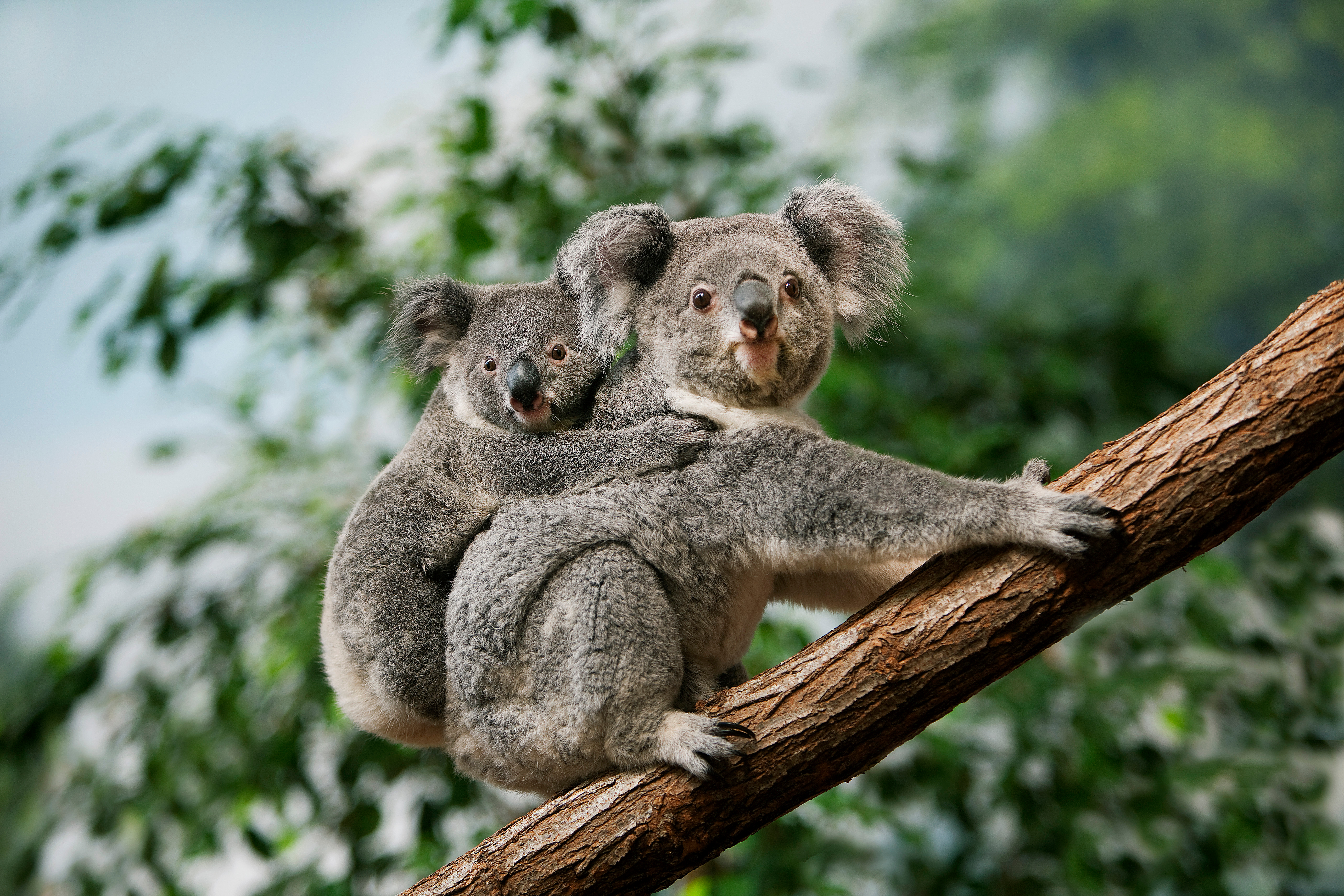
Many animals, including birds, mammals, and reptiles, do not undergo dramatic changes as they grow. When they are born or hatch from eggs, they look like a smaller version of an adult animal. Over their lifetime, they grow and develop, but their body structure remains much the same. This kind of life cycle is called direct development. 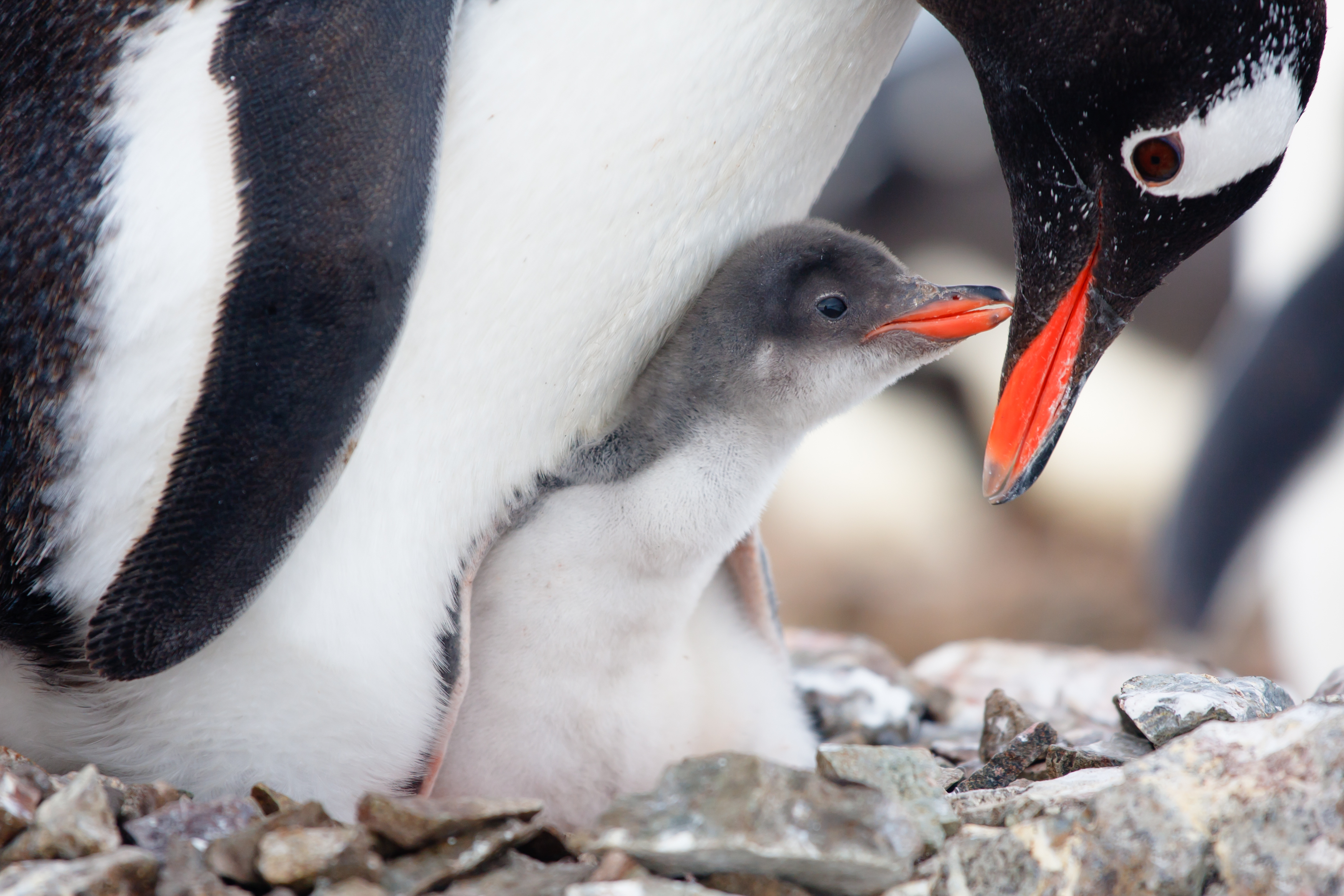
In other kinds of animals, the young animals differ in form and appearance from the adults. As they grow, they may lose and develop limbs, organs, and other major body parts. Sometimes, the young and the adult look so different that people mistake them for different species. These animals grow by indirect development. Many types of animals grow by indirect development, including amphibians, crustaceans (a group that includes crabs, lobsters, and shrimp), and insects. 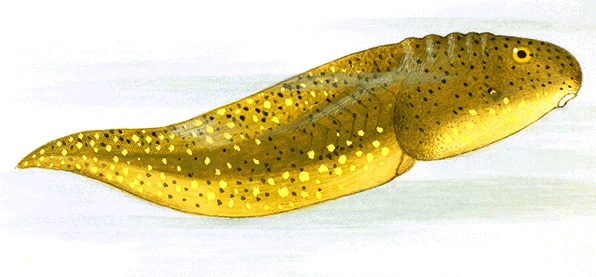
Insect life cycles.
A few kinds of insects grow by direct development, but most insects grow by indirect development. Indirect development in insects is called metamorphosis. Metamorphosis is a series of extreme changes in form and appearance that occur as an organism develops into an adult. Metamorphosis can be either complete or incomplete.
Insects that go through complete metamorphosis have four life stages. These stages are (1) egg, (2) larva, (3) pupa, and (4) adult.

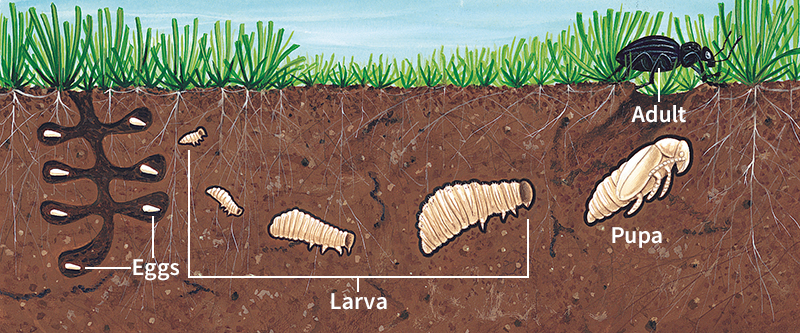
In species that develop through complete metamorphosis, adult insects lay eggs, which contain the embryo that will develop into a new organism. An embryo is an animal or plant in an early stage of its development. Many species, such as butterflies and wasps, lay their eggs on or near a food source. When the eggs hatch, the offspring will have something to eat right away.
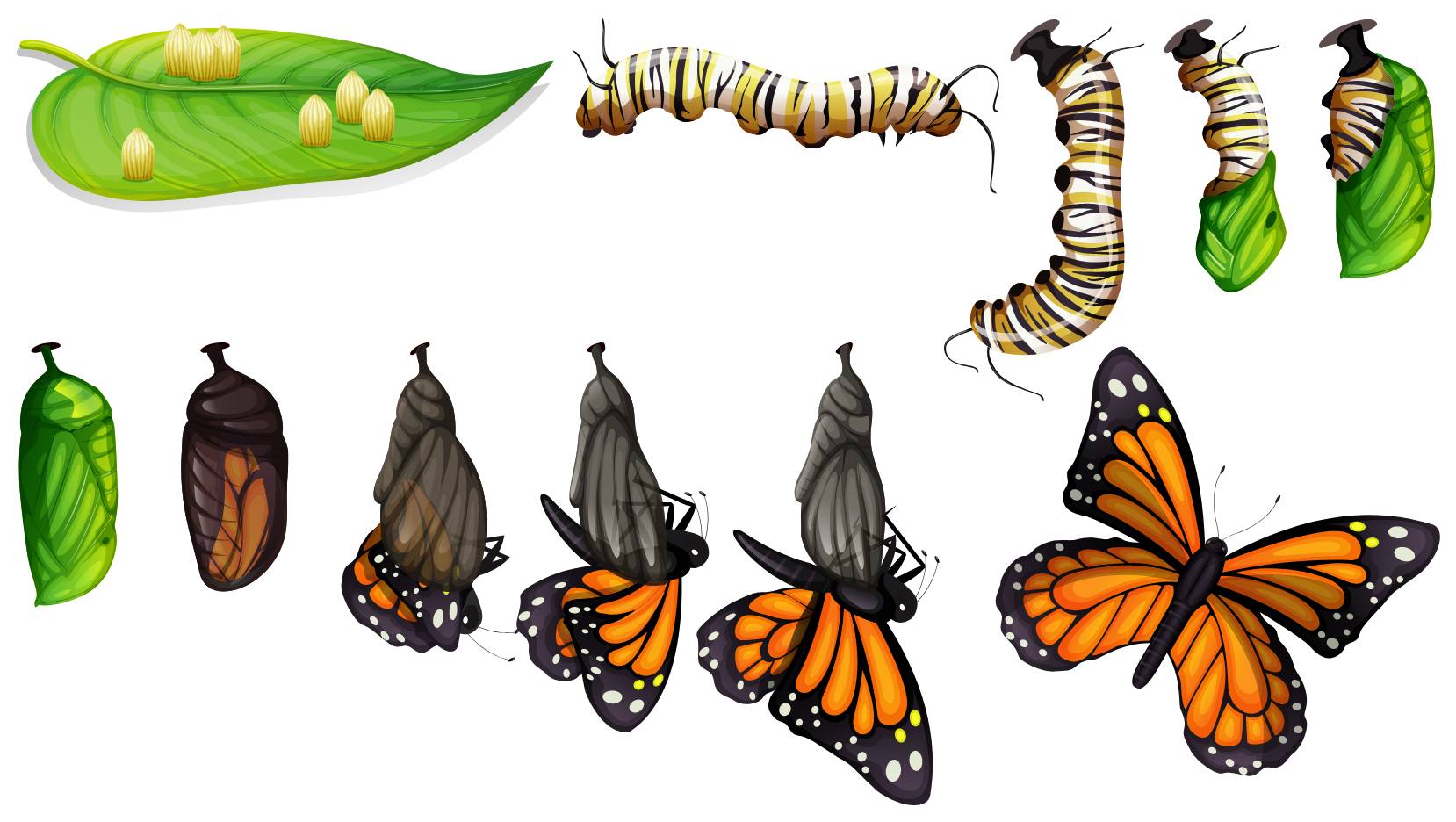
After an egg hatches, the insect is called a larva. The larval stage in the life of a butterfly or moth, for example, is a caterpillar. Larvae usually eat large amounts of food to grow larger and prepare for the pupa stage.
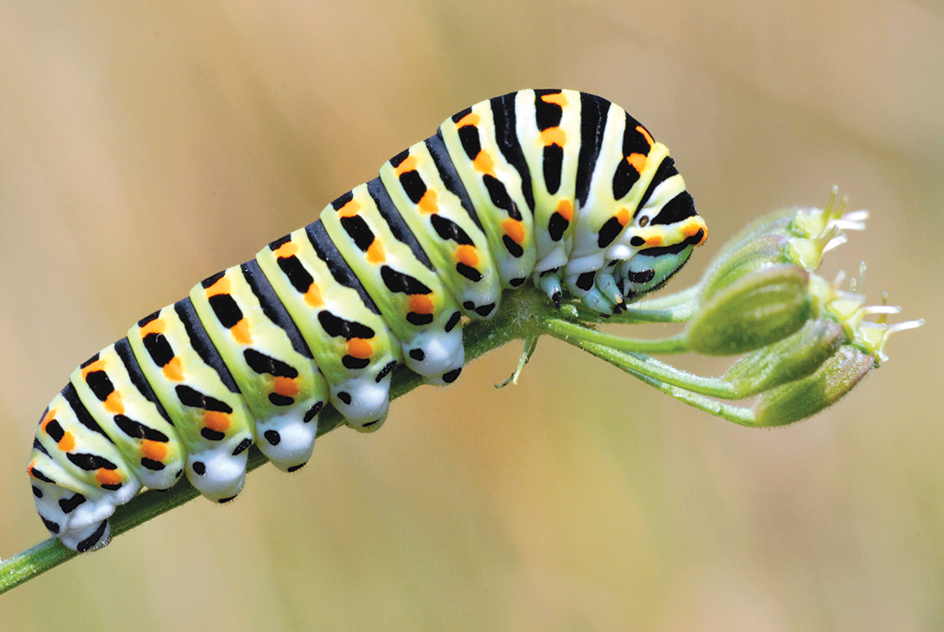
In the pupa stage, the insect transforms from a larva into an adult. To enter the pupa stage, the larva is encased in a protective covering. Caterpillars create a casing around themselves, called a chrysalis in the case of butterflies, and a cocoon for moths. Bee larvae hatch in cells (compartments) inside the beehive, and adult worker bees seal them inside. After the insect is safely sealed inside its protective covering, its body begins to change. Insects in the pupa stage may lose old body parts and grow different ones, such as wings. Their organs may change size or position within the body.
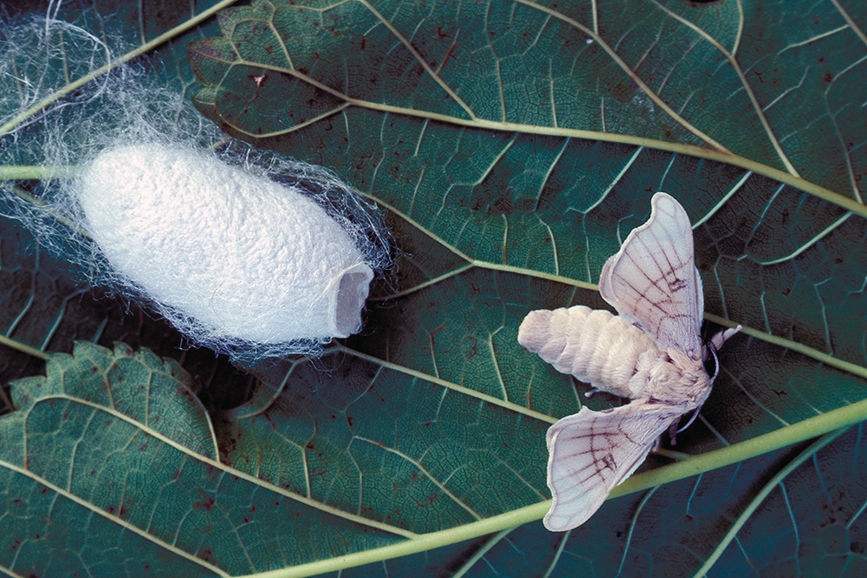
Insects emerge from the pupa stage as fully formed adults. Adult insects look dramatically different from larvae. When an insect reaches the adult stage, it is ready to reproduce.
Incomplete metamorphosis, which occurs in many insect species, has only three stages: (1) egg, (2) nymph, and (3) adult. Insects that undergo incomplete metamorphosis include cockroaches, crickets, and grasshoppers. When one of these insects hatches from an egg, it enters the nymph stage. Nymphs look similar to adults, but they usually do not have wings. Nymphs grow by shedding their exoskeleton (hard outer covering) in a process called molting . Each time the nymph molts, it grows bigger. After its final molt, the insect’s wings are fully developed and it is considered an adult.
Fish life cycles.
Different fish species can have very different life cycles. Different species may grow by direct or indirect development. Most fish lay eggs that hatch outside their body. When fish larvae hatch, they usually have a yolk sac attached to their body. The yolk sac is slowly absorbed, providing the larvae with nutrients as they grow. When the yolk sac is completely absorbed, the young fish, called fry, begin to find food on their own. Some species of fish, including many sharks, give birth to live young. Most kinds of fish go through one or more additional life stages as they grow from fry to sexually mature adult fish.
Amphibian life cycles.
Amphibians —including caecilians (wormlike animals with no arms or legs), frogs , and salamanders —spend part of their lives in the water and part on land. Most amphibians grow by indirect development. Amphibians lay their jellylike eggs in the water, or in moist areas. Generally, the young hatch in the water. They may lack lungs and breathe through gills . As young amphibians grow, they develop body parts that allow them to live on land, such as legs and lungs. They may also lose the body parts that allowed them to live completely in the water. For example, some adult amphibians do not have gills.
Loading the player...
Frog life cycle

Reptile life cycles.
Reptiles —including alligators, crocodiles, lizards, snakes, and turtles—grow through direct development. Most reptiles lay eggs. Some snakes give birth to live young. Young reptiles, or hatchlings, look like small versions of adult reptiles. As reptiles grow larger, they shed their skin periodically.
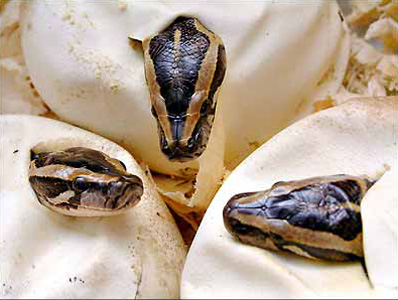
Bird life cycles.
Birds grow through direct development. All birds lay eggs. Many birds lay their eggs in nests to protect their offspring. Birds incubate (warm) their eggs to help the embryo develop inside. When a bird hatches from the egg, it is called a hatchling. Most hatchlings are not fully developed and cannot feed or protect themselves. They stay in the nest while their parents bring them food. Other bird hatchlings, including ducks and other waterfowl, are able to walk, feed, and even swim within hours of hatching. However, they remain close to their mother for many weeks as they grow. Hatchlings typically have a downy coat of feathers that are not useful for flight.
Birds that can fly go through a stage when they are still dependent on their parents but have developed some flight feathers and are learning to fly. Birds in this stage are called fledglings. When a bird is able to live on its own but has not yet reached sexual maturity (ability to reproduce), it is considered a juvenile. Juvenile birds often look similar to adults, but with duller plumage (feathers). They begin to live more independently. When birds reach sexual maturity, they are considered adults.
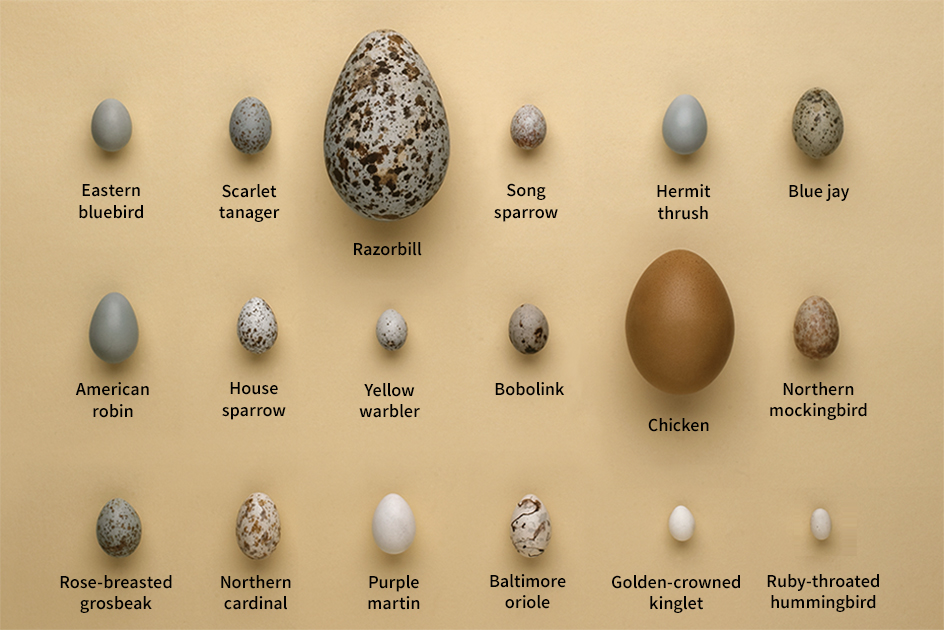

Mammal life cycles.
Mammals grow through direct development. Nearly all mammals give birth to live young. However, monotremes (platypuses and echidnas) lay eggs. Among another group called marsupials, such as kangaroos and opossums, the young are born at an early stage of development. They are tiny and resemble embryos. Typically, young marsupials continue to develop outside the female’s body in a specially adapted pouch. In most mammals, the embryo develops inside the female in a special organ called a placenta, and young are born more fully developed. Such animals are called eutherians or placental mammals. Female mammals produce milk to feed their young.
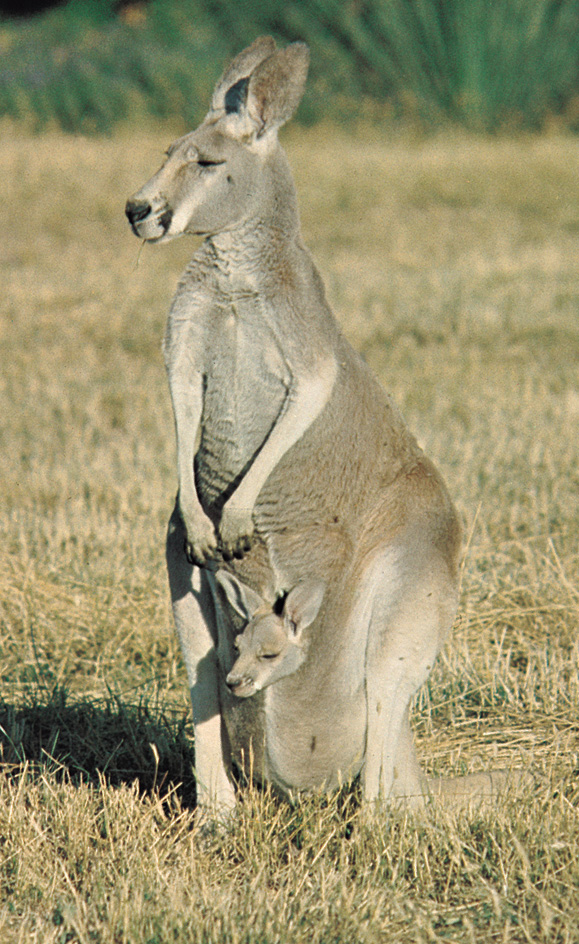
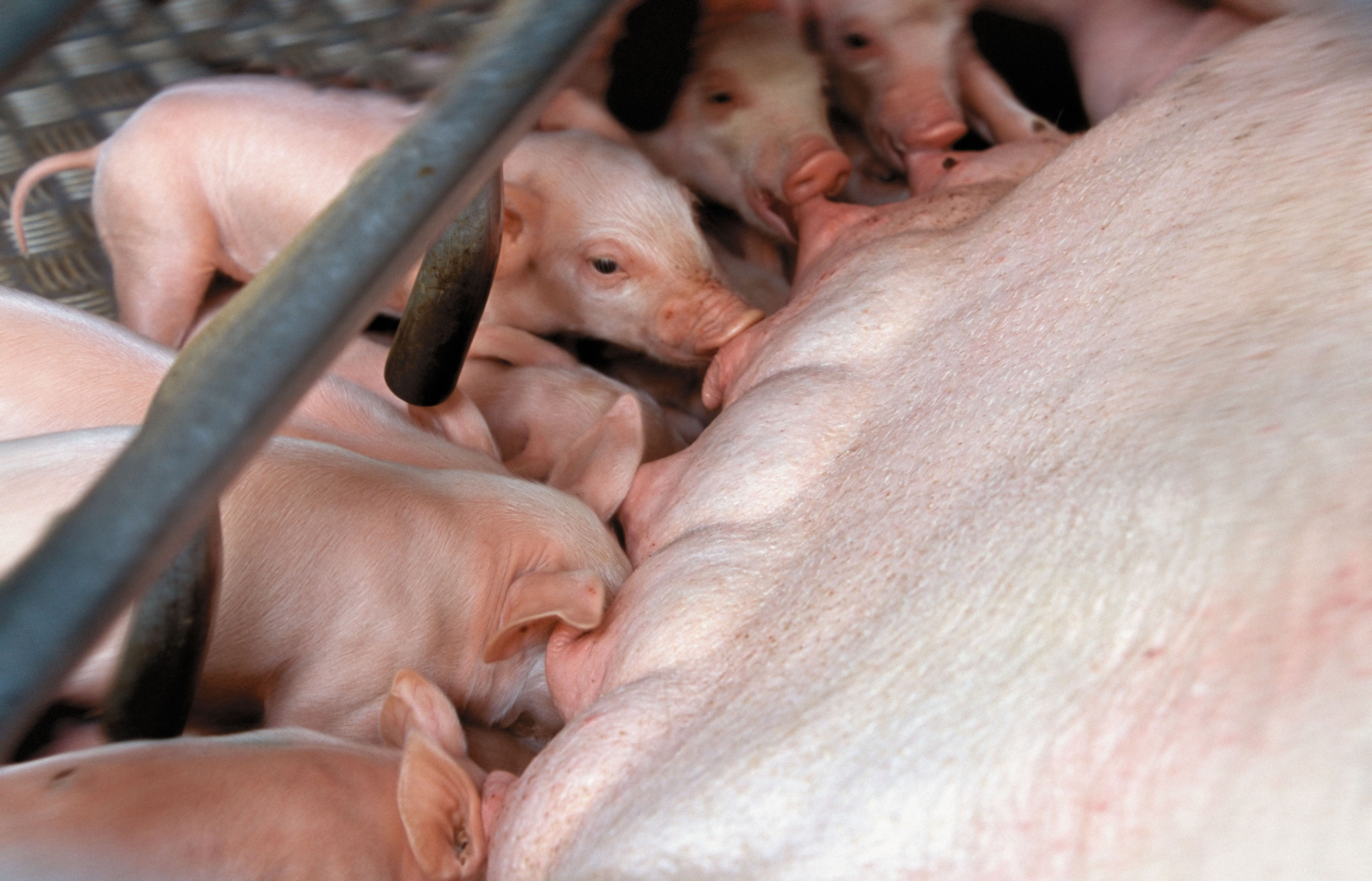
Life cycles of plants
Plant life cycles differ from those of animals. Plants may develop from seeds or from spores. A seed is the fertilized egg of a plant. A spore is a tiny structure, usually a single cell, that can develop into a new organism on its own.
Plants may reproduce through sexual reproduction or asexual reproduction. . Sexual reproduction is the process of creating a new organism by combining two sex cells. The new organism has some genes from each parent cell. A gene is part of a cell that determines which characteristics the plant inherits from the parents. Asexual reproduction creates a new organism without combining different sex cells. The new organism has the same genes as the parent organism.
Reproduction with spores.
Some plants reproduce by creating spores. Most plants that produce spores, such as ferns, have a special two-stage life cycle that alternates between asexual and sexual reproduction. (See Alternation of generations. )
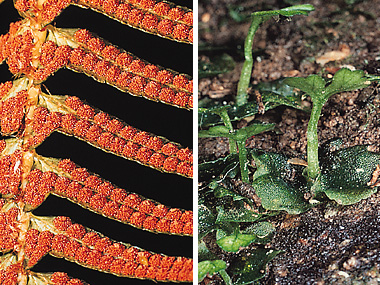
In the first stage, the plant produces spores, which disperse (scatter) to new locations. The plant that produces the spores is called the sporophyte.
In the second stage, the spores grow into gametophytes. A gametophyte is a small, specialized plant. It does not look like the parent plant. The gametophyte develops reproductive organs. Gametophytes can produce male sperm cells, female egg cells, or both. When a sperm cell and an egg cell unite, they form a zygote. The zygote develops into a sporophyte and the cycle continues.
Reproduction with seeds.
Many familiar plants grow from seeds. Seeds are formed when a female sex cell combines with a male sex cell.
To produce seeds, plants have reproductive organs that can be female or male. Female reproductive organs produce ovules, which contain the female sex cells, called eggs. Male reproductive organs of the plant produce pollen, which contains the male sex cells, called sperm. An individual plant may have both female and male reproductive organs, or it may have only one kind of reproductive organ.
Pollination occurs when a grain of pollen transfers to an ovule. Pollen may be transferred to a different ovule on the same plant (self-pollination), or to an ovule on a different plant (cross-pollination). Pollen cannot move on its own. Pollen is usually carried to the ovule by animals or wind. People may also pollinate plants by hand.
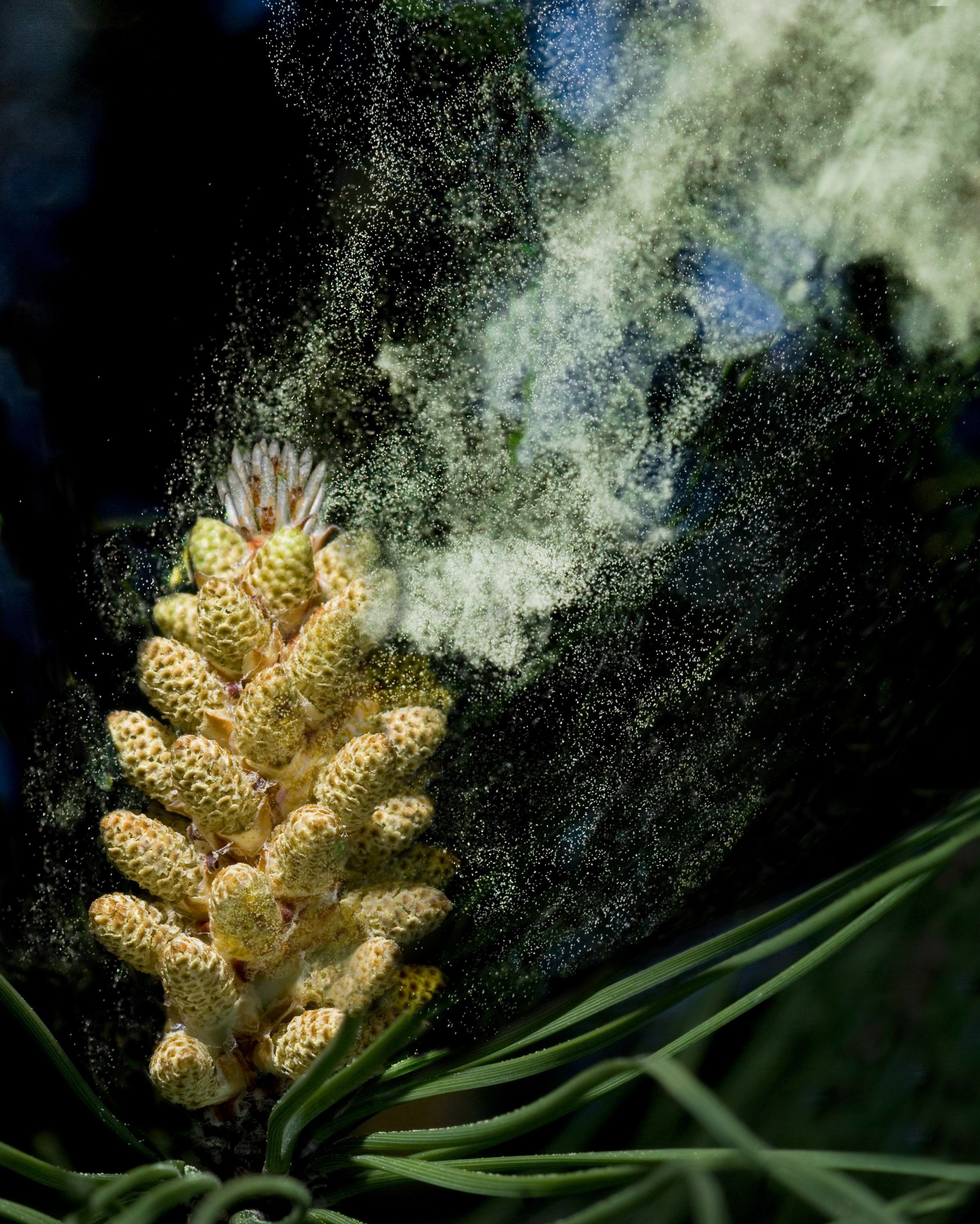
In angiosperms (flowering plants), the reproductive organs are found in the flower. Ovules are produced in a central organ called the ovary. Pollen is produced in a stalk-like organ called the anther. A flower’s colorful petals help attract insects and other animals that will spread the pollen around.
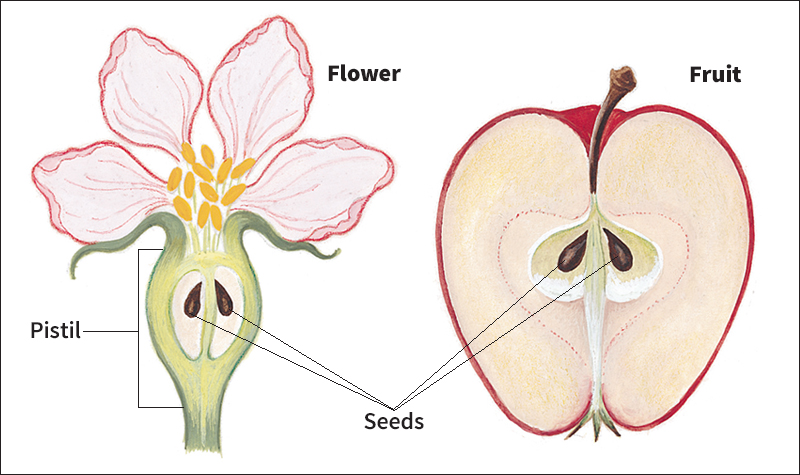
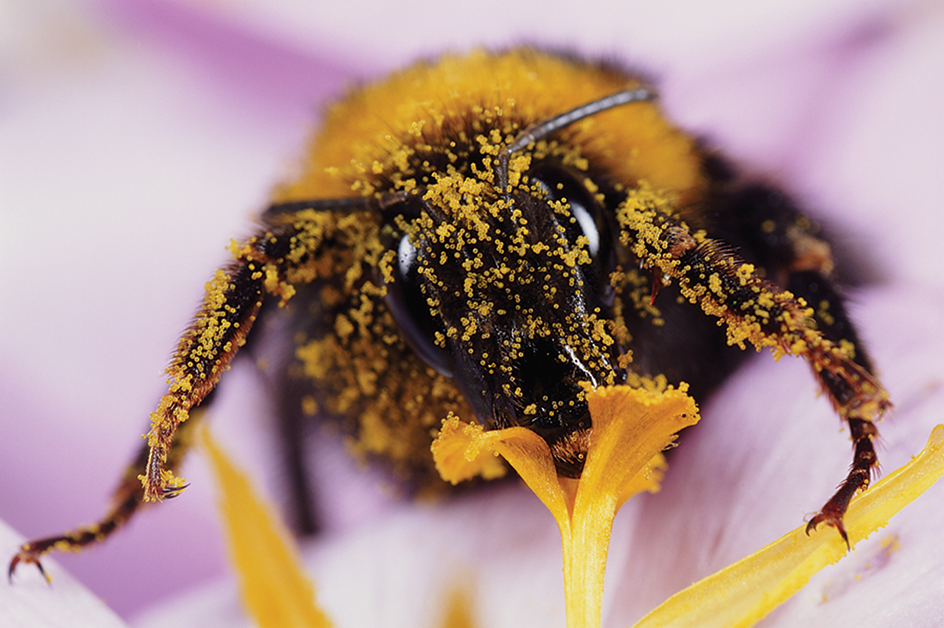
Gymnosperms (plants that produce cones) produce large female cones and smaller male cones. The male cones release pollen, which travels on the wind to the female cones. Gymnosperms do not store their ovules in ovaries. Instead, the ovules are found on the scales of the cones. The woody scales of the female cones keep the seeds safe. 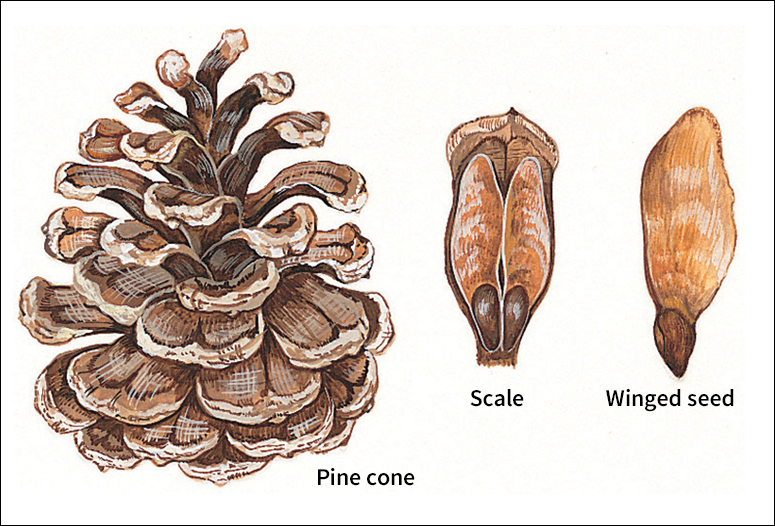
After pollination, a sperm cell from a pollen grain joins with an egg cell from the ovule, creating a zygote (fertilized egg). The zygote develops into a seed. Inside the seed, an embryo begins to form. The hard covering of the seed protects the embryo.
Seeds may fall to the ground, or they may be carried away by animals, water, or wind. In flowering plants, the ovary develops into a fruit around the seeds. Animals and people may eat the fruit and spread the seeds to a new location. Some plants need special conditions to release their seeds. Several kinds of pine tree only release their seeds after a wildfire. The pine cones are sealed shut with sticky resin. The heat of the wildfire melts the resin and the seeds fall out of the cone.
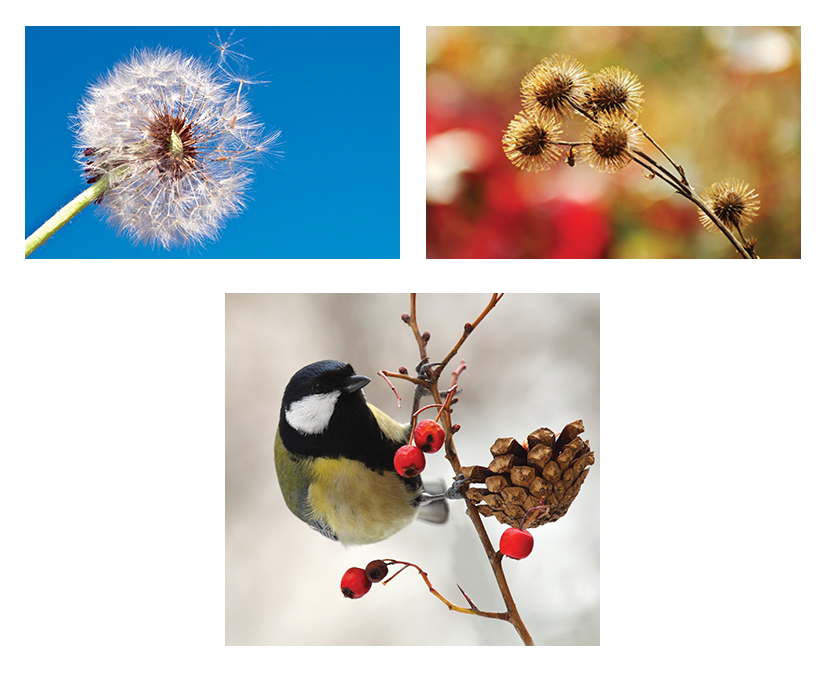
When the temperature, moisture, oxygen, and soil conditions are right, the seed germinates. The seed splits open. The embryo grows roots and a small shoot (sprout) pushes up through the soil toward the sunlight. When the first roots and shoots from a seed appear out of the soil, it is called a seedling.
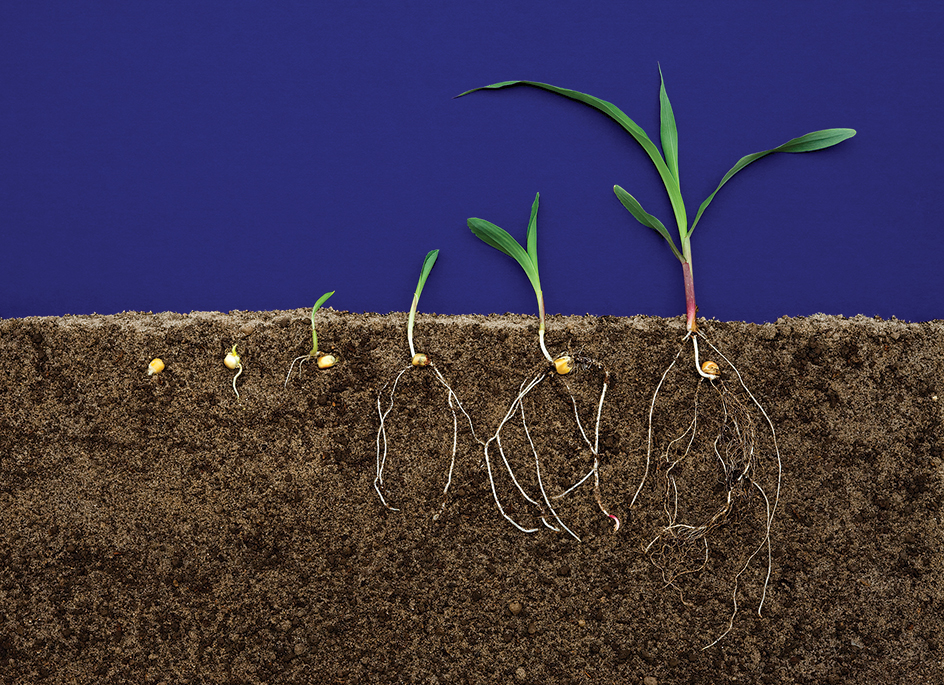
Other kinds of plant reproduction.
Plants that usually reproduce sexually may also have methods of reproducing asexually. Often, a new plant grows from a piece of the parent plant. For example, some plants send out long, horizontal, root-like structures called rhizomes. New shoots grow up from the rhizomes toward the sunlight to form new plants. Some plants can grow new plants from root-like tubers, such as potatoes. Farmers frequently use these methods to grow new plants, because they are faster than raising new plants from seeds.
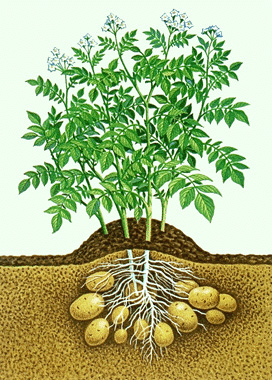
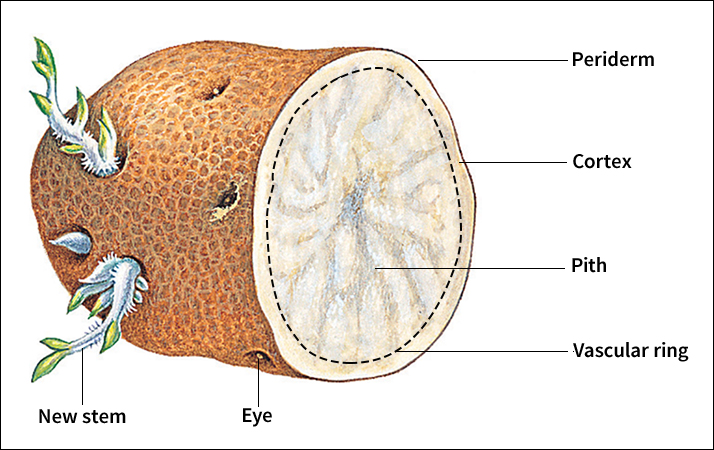
Plant growth.
Like other living things, plants need energy to grow. Seedlings grow using energy stored within the seed. Once roots and leaves are developed, a plant uses sunlight, water, and carbon dioxide gas to make chemical energy in a process called photosynthesis (see Photosynthesis ). Plants usually grow at the tips of their roots, stems, and branches. These parts of the plant have special tissue full of cells that multiply throughout the plant’s lifetime.
Most flowering plants begin developing flowers at a specific time of year. Plants are sensitive to changes in sunlight, temperature, and other environmental conditions. The right environmental conditions signal to the plant that it is time to start developing flowers. If a plant produces flowers too early or too late, its flowers might not be pollinated. For example, pollinating insects may only be present at certain times of the year. After a flower is pollinated, the plant life cycle repeats and a new generation begins.
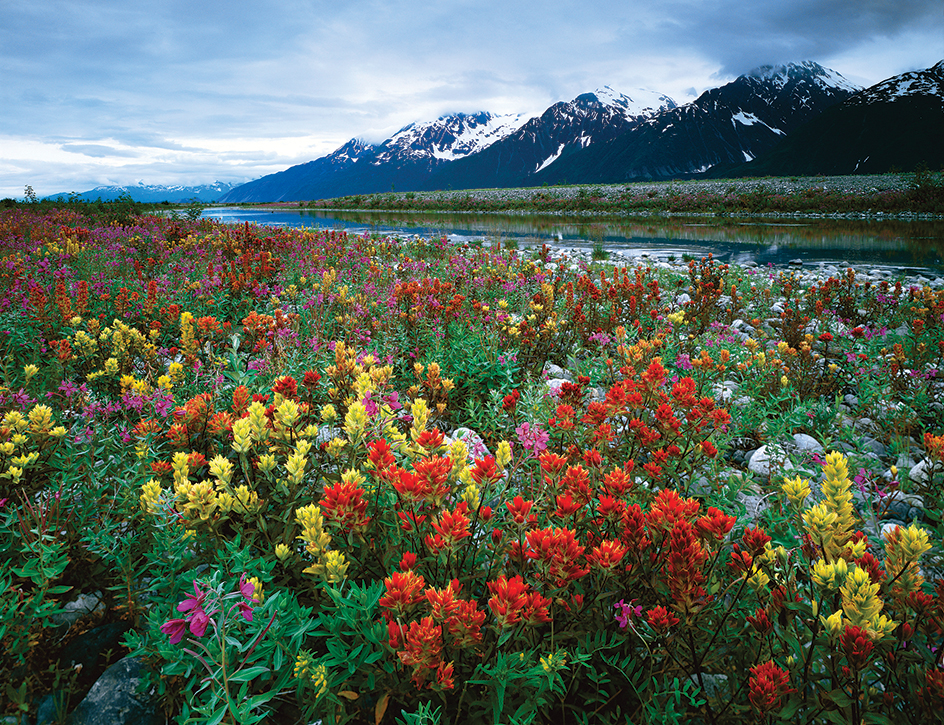
Animal and plant species can only survive if members of the species grow to maturity and successfully reproduce. Not all individual organisms reach maturity or reproduce before they die. But if enough individuals within a species do so, the life cycle begins a new generation.
See also Alternation of generations ; Butterfly (The life cycle of butterflies) ; Life ; Metamorphosis ; Reproduction .
